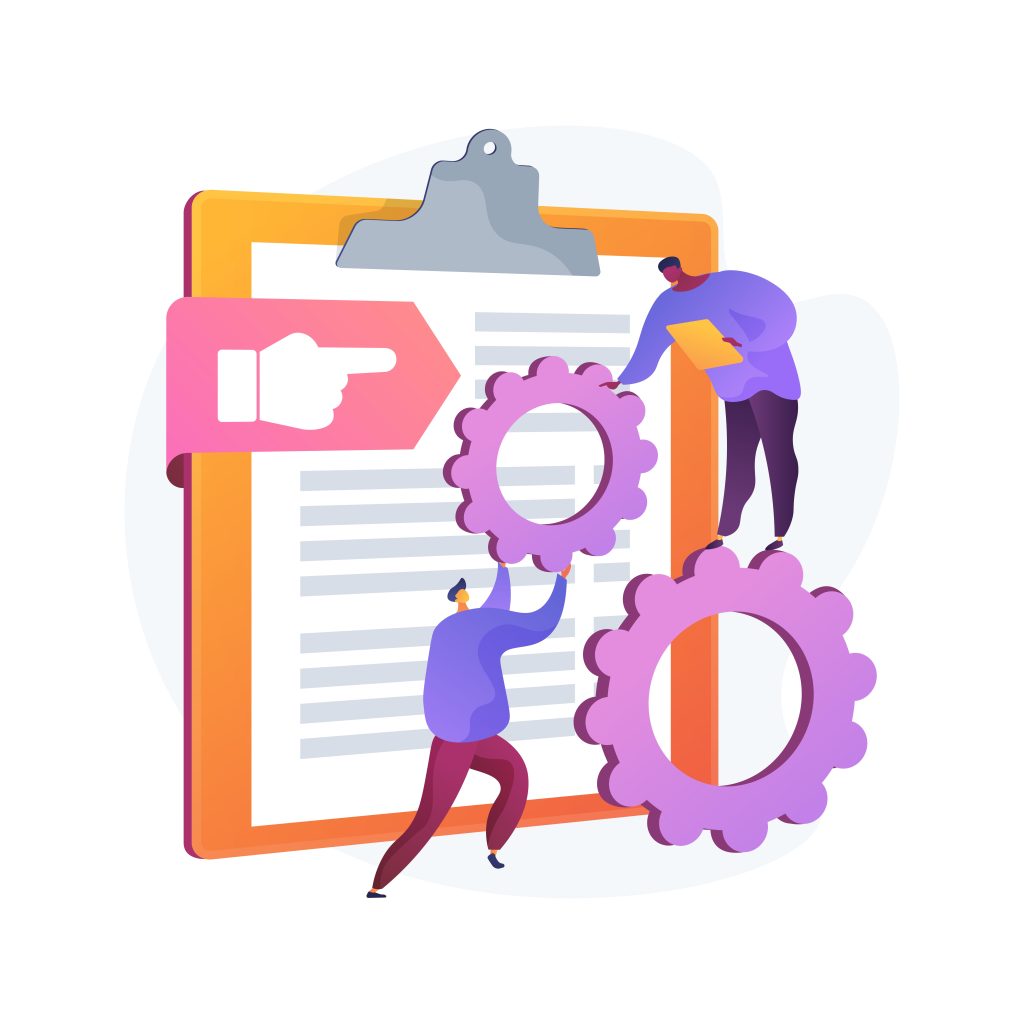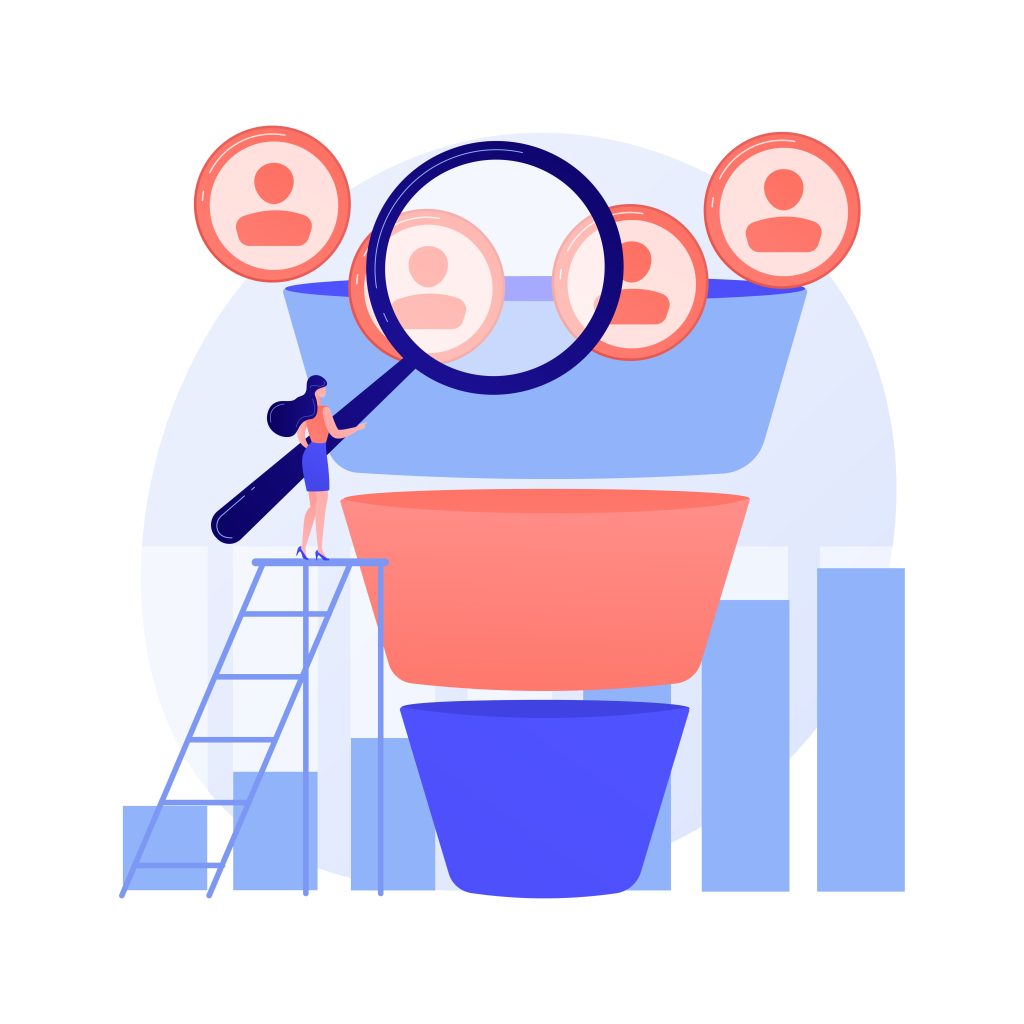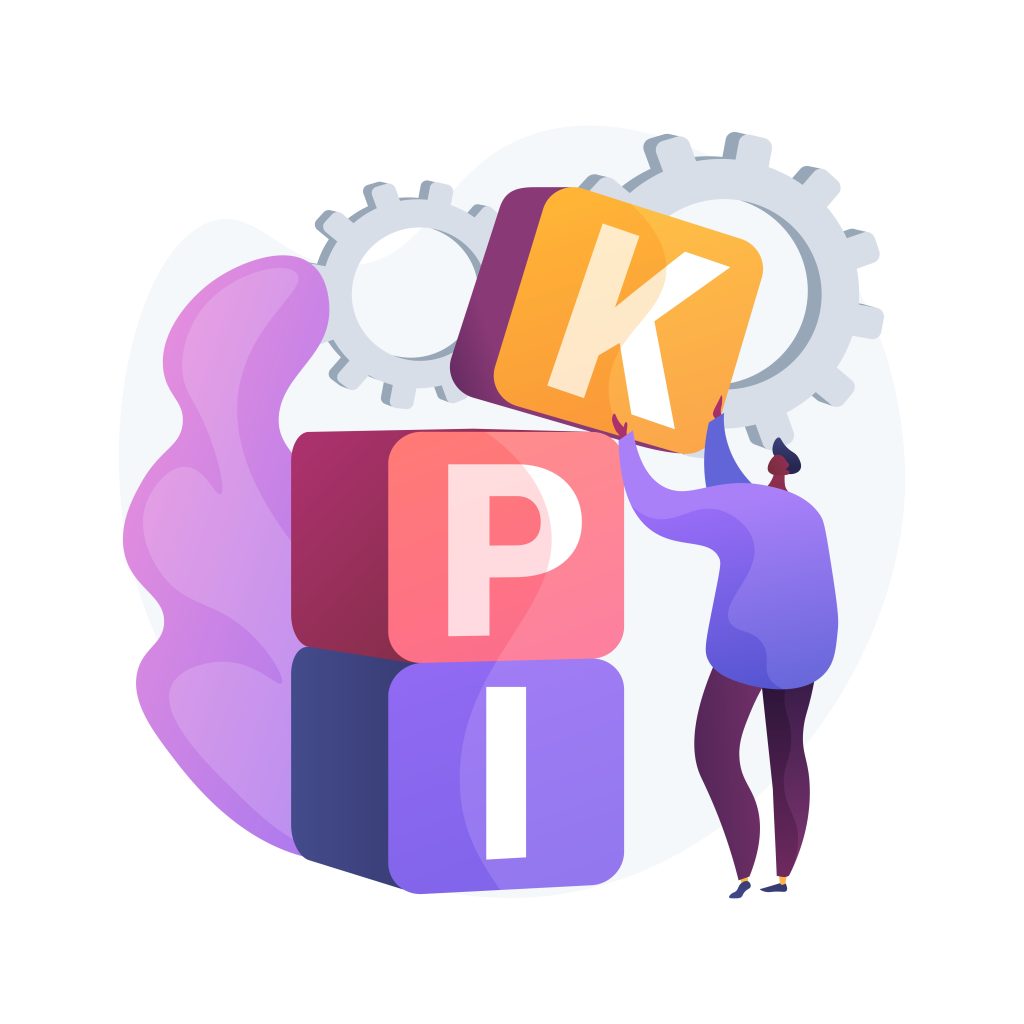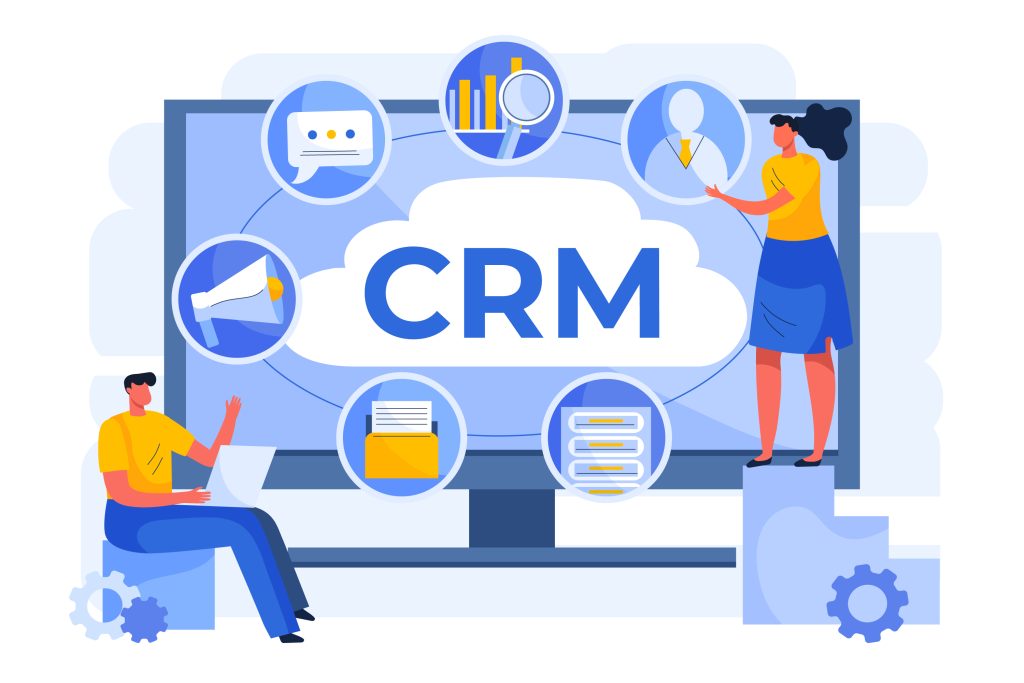
Générer des prospects qualifiés : les 7 méthodes incontournables pour booster votre prospection
Vous en avez assez de perdre votre temps avec des prospects qui ne sont pas prêts à acheter ? Vous souhaitez simplement pouvoir trouver des clients sur internet ?
Vous rêvez d’un pipeline rempli de leads ultra-qualifiés, qui n’attendent que de signer avec vous ?
Bonne nouvelle : c’est possible. Et même plus simple que vous ne le pensez.
Dans cet article, découvrez les 7 techniques imparables pour générer un maximum de prospects qualifiés, du profil de prospect idéal au lead scoring en passant par les stratégies d’attraction et de nurturing.
Prêt à faire passer votre prospection à la vitesse supérieure ? C’est parti.
Techniques de Prospection Efficaces pour Booster Votre Génération de Leads

- Découvrez les meilleures techniques de prospection pour générer des leads qualifiés
- Apprenez à personnaliser vos approches par téléphone, e-mail et réseaux sociaux
- Optimisez votre processus de prospection pour maximiser vos résultats
Prospection téléphonique ciblée
La prospection téléphonique reste une méthode efficace pour entrer en contact direct avec vos prospects. Pour réussir, il est essentiel d’identifier les prospects correspondant à votre persona idéal. Étudiez leur profil, leurs besoins et leurs challenges pour adapter votre discours.
Préparez un script d’appel persuasif mettant en avant vos avantages uniques. Montrez comment votre solution peut répondre à leurs problématiques spécifiques. Soyez concis et allez droit au but. N’oubliez pas de prévoir des réponses aux objections courantes.
Astuces pour une prospection téléphonique réussie
- Choisissez le bon moment pour appeler (évitez les lundis matins et vendredis après-midis)
- Soignez votre introduction pour capter l’attention en quelques secondes
- Posez des questions ouvertes pour engager la conversation
- Écoutez activement et montrez un réel intérêt pour votre interlocuteur
- Proposez un rendez-vous ou une démonstration pour aller plus loin
Faites un suivi régulier et personnalisé avec les prospects intéressés. Envoyez un e-mail de remerciement après votre appel, en rappelant les points clés de votre discussion. Plannifiez ensuite vos relances en fonction de leur niveau d’intérêt et de leur avancement dans le cycle d’achat.
Prospection par e-mail personnalisée
L’e-mail est un canal incontournable pour toucher un grand nombre de prospects. Mais pour sortir du lot, il est crucial de personnaliser vos messages. Commencez par segmenter votre base de données de prospects selon leurs intérêts, leurs besoins et leur niveau d’engagement.
Créez des templates d’e-mails accrocheurs et pertinents pour chaque segment. Utilisez un objet intriguant, un contenu de valeur et un call-to-action clair. Pensez à inclure des éléments de personnalisation comme le prénom du destinataire ou un détail propre à son entreprise.
Pour gagner en efficacité, automatisez vos campagnes d’e-mailing tout en conservant une touche personnelle. Des outils comme Mailchimp ou Hubspot vous permettent de programmer des scénarios d’envoi selon les actions de vos prospects (ouverture, clic, réponse…).
Bonnes pratiques pour vos e-mails de prospection
- Soignez votre ligne d’objet pour augmenter votre taux d’ouverture
- Soyez bref et précis dans votre contenu (350 mots maximum)
- Mettez en avant les bénéfices pour votre prospect
- Facilitez la lecture avec des paragraphes courts et des listes à puces
- Intégrez un lien vers une ressource utile (livre blanc, cas client…)
- Testez différentes versions pour optimiser vos performances
Prospection via les réseaux sociaux
Les réseaux sociaux offrent de nombreuses opportunités pour identifier et engager vos prospects BtoB. La clé est de choisir les plateformes où ils sont les plus actifs. Pour la plupart des secteurs B2B, LinkedIn s’impose comme le réseau incontournable. Mais certains prospects peuvent aussi être présents sur Twitter ou Facebook selon votre cible.
Votre stratégie de prospection sur les réseaux sociaux doit combiner la publication de contenu de valeur, l’interaction avec votre audience et la prise de contact directe. Partagez vos derniers articles de blog, vos études de cas et vos conseils pour attirer l’attention de vos prospects et démontrer votre expertise.
Interagissez régulièrement avec vos abonnés en likant, commentant et partageant leurs publications. Cela vous permet de créer un lien et de les engager de façon plus naturelle. Identifiez les prospects qui interagissent le plus avec votre contenu et entrez en contact avec eux par message privé pour initier une conversation commerciale.
Pour gagner en efficacité, utilisez des outils de social selling comme Sales Navigator sur LinkedIn. Ils vous permettent de détecter les signaux d’achat (changement de poste, réaction à vos publications…) et de personnaliser vos messages selon le profil et les centres d’intérêt de vos prospects.
Étapes pour prospecter efficacement sur LinkedIn
- Optimisez votre profil pour inspirer confiance et crédibilité
- Publiez régulièrement du contenu engageant et utile
- Développez votre réseau en envoyant des invitations personnalisées
- Interagissez avec les publications de vos prospects
- Envoyez un message privé mettant en avant votre valeur ajoutée
- Proposez un appel ou un rendez-vous pour échanger plus en détail
En combinant ces techniques de prospection téléphonique, par e-mail et sur les réseaux sociaux, vous pourrez générer un flux continu de leads qualifiés pour votre entreprise. L’essentiel est de rester constant dans vos efforts et d’affiner votre approche au fil du temps en mesurant vos résultats.
Ces méthodes tactiques de prospection vous permettent de cibler efficacement vos prospects et d’initier un premier contact. Mais pour transformer ces leads en clients, vous devrez aussi mettre en place des stratégies de génération de leads visant à les attirer, les convertir et les fidéliser sur le long terme.
Stratégies de Génération de Leads pour Attirer des Prospects Qualifiés

- Créez du contenu attractif qui répond aux problématiques de vos prospects
- Organisez des webinaires et démonstrations produit pour engager votre audience
- Optimisez votre présence sur les réseaux sociaux pour atteindre de nouveaux prospects
Création de contenu attractif
Pour générer des leads qualifiés, il est essentiel de créer du contenu qui répond directement aux besoins et problématiques de votre cible. Rédigez des articles de blog informatifs qui abordent les sujets qui préoccupent vos prospects. Partagez votre expertise et donnez des conseils pratiques qu’ils pourront appliquer dans leur quotidien professionnel.
En plus des articles de blog, proposez des ressources plus approfondies comme des livres blancs, guides pratiques ou études de cas. Demandez aux visiteurs de laisser leurs coordonnées en échange de ces contenus premium. Cela vous permettra de constituer une base de leads qualifiés qui ont déjà montré un intérêt pour votre expertise.
Une fois vos contenus créés, assurez-vous de les diffuser largement. Publiez-les sur votre site web, partagez-les sur les réseaux sociaux et incluez-les dans vos newsletters. Plus votre contenu sera visible, plus vous attirerez de prospects qualifiés.
Mise en place de webinaires et démonstrations produit
Les webinaires et démonstrations produit sont d’excellents moyens d’engager votre audience et de générer des leads qualifiés. Choisissez une thématique qui intéressera votre cible et un format adapté, comme une présentation suivie d’une séance de questions-réponses.
Faites la promotion de votre événement en ligne via tous vos canaux de communication : site web, réseaux sociaux, newsletters, etc. Encouragez les inscriptions en mettant en avant les bénéfices concrets que les participants en retireront.
Une fois votre webinaire ou démo terminé, prenez le temps de qualifier les leads obtenus. Contactez-les individuellement pour évaluer leur intérêt et leurs besoins spécifiques. Faites un suivi régulier auprès des prospects les plus prometteurs afin de les convertir en clients.
Optimisation de votre présence sur les réseaux sociaux
Les réseaux sociaux sont un puissant levier pour atteindre de nouveaux prospects et générer des leads qualifiés. Commencez par définir les plateformes où se trouvent vos cibles, comme LinkedIn pour une audience B2B ou Facebook pour le grand public.
Créez des profils optimisés qui reflètent l’expertise et le positionnement de votre entreprise. Partagez régulièrement vos contenus, mais aussi des actualités et conseils liés à votre secteur. Interagissez avec votre communauté en répondant aux commentaires et messages privés.
Vous pouvez également utiliser les fonctionnalités publicitaires des réseaux sociaux pour toucher de nouveaux prospects. Paramétrez des campagnes ciblées en fonction de critères comme la fonction, le secteur ou les centres d’intérêt. Votre contenu sponsorisé sera ainsi vu par une audience ultra qualifiée, susceptible de devenir de véritables opportunités commerciales.
Participation aux forums et communautés en ligne
Une autre façon d’identifier des prospects qualifiés est de participer activement aux forums et communautés en ligne fréquentés par votre cible. Qu’il s’agisse de groupes LinkedIn, de forums spécialisés ou de plateformes comme Quora, ces espaces sont l’occasion de démontrer votre expertise tout en nouant des relations.
Commencez par identifier les communautés pertinentes pour votre activité. Créez-y un profil complet qui met en avant votre savoir-faire et vos domaines de compétences. Puis, participez régulièrement aux discussions en apportant de la valeur ajoutée. Répondez aux questions, partagez des conseils, donnez votre avis d’expert.
Au fil des échanges, vous développerez votre notoriété et serez perçu comme une référence dans votre domaine. Les membres en recherche de solutions n’hésiteront pas à vous contacter, vous permettant ainsi de générer des leads déjà acquis à votre cause.
Mise en place d’un programme de parrainage client
Vos clients satisfaits peuvent être une formidable source de leads qualifiés. Mettez en place un programme de parrainage qui les récompense lorsqu’ils vous recommandent auprès de leurs contacts professionnels.
Définissez des incitations attractives, comme des réductions, des mois d’abonnement offerts ou des cadeaux. Communiquez sur ce programme auprès de votre base clients via des emailings dédiés, une page sur votre site web ou encore des bannières dans leur espace personnel.
Facilitez au maximum le parrainage, par exemple en fournissant un modèle de message personnalisable ou un formulaire de parrainage pré-rempli. Vos clients pourront ainsi vous recommander en quelques clics auprès de prospects à fort potentiel, pré-qualifiés par leur bon relationnel avec leur parrain.
Optimisation de la Qualification des Prospects pour Maximiser les Conversions

- Identifiez votre client idéal pour concentrer vos efforts de prospection
- Mettez en place un système de lead scoring pour prioriser les prospects les plus prometteurs
- Nurturez les prospects non encore prêts à l’achat avec des contenus personnalisés
Définition du profil de prospect idéal (ICP)
Pour optimiser la qualification de vos prospects, il est essentiel de définir clairement votre profil de client idéal (ICP – Ideal Customer Profile). Analysez en profondeur vos meilleurs clients actuels et identifiez les points communs qui les caractérisent. Ces critères peuvent inclure des données démographiques (taille de l’entreprise, secteur d’activité, localisation géographique), des aspects firmographiques (chiffre d’affaires, nombre d’employés, structure organisationnelle) et des comportements spécifiques (utilisation de certaines technologies, présence sur les réseaux sociaux, participation à des événements)
Une fois votre ICP défini, concentrez vos efforts de prospection sur ce type de prospects à haute valeur. Adaptez votre message et vos offres pour répondre précisément à leurs besoins et attentes. Cette approche ciblée vous permettra d’attirer des prospects qualifiés avec un fort potentiel de conversion.
Exemple d’ICP pour une entreprise de logiciels SaaS B2B
- Entreprises de 50 à 500 employés
- Secteurs : technologie, finance, santé
- Chiffre d’affaires annuel supérieur à 10 millions d’euros
- Utilisation de technologies cloud et de solutions CRM
- Présence active sur LinkedIn et participation à des conférences tech
Mise en place d’un système de lead scoring
Le lead scoring est une méthode permettant d’attribuer des points à chaque prospect en fonction de critères prédéfinis. Ces critères peuvent inclure l’autorité du prospect dans son entreprise, son niveau de besoin, le timing de son projet et son budget disponible. L’attribution de scores vous aide à prioriser les leads les plus prometteurs et à déterminer quand un prospect est suffisamment qualifié pour être transmis à l’équipe commerciale.
Pour mettre en place un système de lead scoring efficace, définissez un ensemble de critères pertinents et attribuez-leur des points en fonction de leur importance. Fixez ensuite un seuil de qualification à partir duquel un lead est considéré comme “prêt à l’achat”. Automatisez l’attribution des scores grâce à votre CRM ou votre outil de marketing automation pour gagner en efficacité et en précision.
- Autorité (Manager = 5 pts, VP = 10 pts, C-level = 20 pts)
- Besoin (faible = 5 pts, moyen = 10 pts, urgent = 20 pts)
- Timing (6 mois = 5 pts, 3 mois = 10 pts, 1 mois = 20 pts)
- Budget (pas défini = 5 pts, >10K€ = 10 pts, >50K€ = 20 pts)
Nurturing des prospects non encore prêts à l’achat
Tous les prospects ne sont pas immédiatement prêts à acheter. Certains peuvent être à un stade précoce de leur réflexion, tandis que d’autres ont besoin de plus d’informations avant de prendre une décision. Pour faire progresser ces prospects dans leur cycle d’achat, mettez en place des programmes de lead nurturing personnalisés.
Segmentez d’abord votre base de prospects selon leur niveau de maturité et leurs centres d’intérêt. Créez ensuite des parcours de nurturing adaptés à chaque segment, avec des contenus pertinents qui répondent à leurs questions et les aident à avancer dans leur réflexion. Ces contenus peuvent prendre la forme de livres blancs, d’études de cas, de webinaires ou de démos produit. L’objectif est de nourrir la relation avec des communications personnalisées qui apportent de la valeur à chaque étape du parcours d’achat.
- Stade précoce : eBooks éducatifs, infographies, articles de blog
- Stade intermédiaire : webinaires, vidéos de démo, études de cas
- Stade avancé : essai gratuit, démo personnalisée, RDV avec un commercial
Qualification approfondie des leads via des sessions de discovery
Une fois qu’un lead a atteint un score élevé, il est temps de le qualifier de manière approfondie via une discussion individuelle. Ces sessions de discovery, généralement menées par un commercial ou un expert produit, permettent d’évaluer précisément les besoins du prospect, son contexte spécifique et ses objectifs business.
Au cours d’une session de discovery, posez des questions ouvertes pour encourager le prospect à s’exprimer librement sur ses challenges et ses attentes. Écoutez attentivement ses réponses pour identifier des opportunités de positionnement de votre offre. Résumez régulièrement la discussion pour vous assurer d’une bonne compréhension mutuelle. Enfin, si le prospect répond à tous vos critères de qualification, proposez-lui naturellement un essai de votre solution ou une démo personnalisée pour concrétiser son intérêt.
Exemples de questions de qualification à poser lors d’une session de discovery
- Quels sont vos principaux objectifs/ priorités business actuellement ?
- Quels défis spécifiques rencontrez-vous dans ce domaine ?
- Comment mesurez-vous le succès de ce type de projet ?
- De quelles fonctionnalités clés avez-vous besoin pour atteindre vos objectifs ?
- Quel est votre processus de décision pour ce type de solution ?
Alignement des équipes marketing et ventes sur la définition d’un lead qualifié
Pour assurer une qualification optimale des prospects, il est crucial que les équipes marketing et commerciale soient parfaitement alignées sur la définition d’un lead qualifié (SQL – Sales Qualified Lead). Cette vision commune permet d’établir un processus fluide et efficace de transfert des leads du marketing vers les ventes.
Organisez des ateliers de travail réunissant des représentants du marketing et des ventes pour définir ensemble les critères d’un SQL. Basez-vous sur les données historiques de vos deals gagnés pour identifier les signaux forts de qualification. Documentez cette définition et partagez-la avec l’ensemble des équipes pour assurer une compréhension homogène. Mettez en place des indicateurs communs pour suivre la performance du processus de qualification et ajustez vos critères si nécessaire.
Cet alignement entre le marketing et les ventes renforce la synergie entre les deux équipes et permet d’optimiser le parcours des prospects, de la génération de leads jusqu’à la conversion finale. En affinant continuellement vos critères de qualification, vous pourrez concentrer vos efforts sur les prospects les plus prometteurs et ainsi maximiser votre taux de conversion.
References: https://www.statista.com/statistics/1111441/number-of-employees-in-companies-in-france/ https://www.hubspot.com/blog/sales/lead-scoring https://www.marketingprofs.com/articles/2020/43431/what-is-lead-nurturing-and-why-is-it-important
KPIs Clés pour Mesurer la Performance de Votre Génération de Prospects

- Suivez ces KPIs essentiels pour évaluer l’efficacité de vos efforts de génération de prospects
- Des métriques clés comme le taux de conversion, le CAC et le taux de qualification des leads vous donneront un aperçu précieux
- Analysez régulièrement ces KPIs pour optimiser en continu votre stratégie de génération de prospects
Taux de conversion de lead en client
Le taux de conversion de lead en client mesure le pourcentage de prospects qui deviennent des clients payants. C’est l’un des KPIs les plus importants pour évaluer la performance globale de votre génération de prospects. Un taux de conversion élevé indique que vous ciblez les bons prospects et que votre processus de vente est efficace.
Pour calculer votre taux de conversion de lead en client, divisez simplement le nombre de nouveaux clients acquis sur une période donnée par le nombre total de leads générés sur la même période. Par exemple, si vous avez généré 1000 leads et gagné 50 nouveaux clients en un mois, votre taux de conversion serait de 5%.
Benchmark du taux de conversion par industrie
Les taux de conversion moyens varient considérablement selon les secteurs d’activité. D’après une étude de Wishpond, le taux de conversion moyen pour le B2B est d’environ 2,23 %. Cependant, les meilleures entreprises atteignent des taux de 5 à 10 %. Pour votre secteur d’activité spécifique, vous pouvez consulter des ressources telles que Klipfolio et InvespCRO pour obtenir des données plus précises.
Pour augmenter votre taux de conversion, concentrez-vous sur la qualification des leads pour vous assurer de ne cibler que les prospects les plus pertinents et les plus susceptibles de se convertir. Optimisez également votre processus de vente et vos communications pour mieux répondre aux besoins et aux attentes de vos prospects cibles.
Coût d’acquisition client (CAC)
Le coût d’acquisition client (CAC) représente le montant total que vous dépensez en moyenne pour acquérir un nouveau client. C’est une métrique cruciale pour évaluer la rentabilité et la viabilité de votre stratégie de génération de prospects. L’objectif est de maintenir votre CAC aussi bas que possible tout en maximisant la valeur vie client (LTV).
Pour calculer votre CAC, additionnez toutes vos dépenses liées à l’acquisition de clients (marketing, ventes, technologie, etc.) sur une période donnée et divisez ce total par le nombre de nouveaux clients acquis sur la même période. Par exemple, si vous avez dépensé 50 000 € et acquis 50 clients en un mois, votre CAC serait de 1 000 €.
Pour optimiser votre CAC, cherchez des moyens de réduire vos coûts d’acquisition, par exemple en améliorant l’efficacité de vos campagnes marketing ou en automatisant certaines parties de votre processus de vente. Vous pouvez également augmenter la valeur vie client pour compenser un CAC plus élevé.
Ressource recommandée : Le livre “Hacking Growth” de Sean Ellis et Morgan Brown fournit des stratégies détaillées pour réduire le CAC et stimuler la croissance.
Taux de qualification de lead (lead-to-MQL)
Le taux de qualification de lead, également appelé taux de conversion de lead en MQL (Marketing Qualified Lead), mesure le pourcentage de vos leads entrants qui répondent à vos critères de qualification et sont prêts à être transmis à l’équipe commerciale. Un taux de qualification élevé indique que vous attirez des leads de haute qualité qui correspondent bien à votre buyer persona.
Pour calculer ce taux, divisez le nombre de MQLs générés sur une période donnée par le nombre total de leads entrants sur la même période. Par exemple, si vous avez généré 1000 leads et qualifié 100 d’entre eux en MQLs en un mois, votre taux de qualification serait de 10 %.
Pour améliorer votre taux de qualification, affinez vos critères de qualification des leads en fonction des données sur vos clients existants et des retours de votre équipe commerciale. Utilisez également des techniques de segmentation et de personnalisation pour mieux cibler vos leads les plus prometteurs.
Critères de qualification des leads B2B
Parlons de prospection commerciale B2B qui est une des forces de l’outil ClarkUp. Les critères typiques de qualification des leads B2B incluent :
- Autorité et pouvoir de décision du lead
- Budget et capacité à acheter votre solution
- Besoin avéré de votre produit ou service
- Alignement avec votre cible idéale
- Délai d’achat et sentiment d’urgence
Pour adapter ces critères à votre propre processus de qualification des leads, vous pouvez utiliser un tableau pour présenter vos critères spécifiques.
Chiffre d’affaires généré par les nouveaux clients
Le chiffre d’affaires généré par les nouveaux clients acquis grâce à vos efforts de génération de prospects est le KPI ultime pour mesurer le ROI de votre stratégie. Plus ce chiffre est élevé, plus votre approche est efficace et rentable.
Pour calculer ce KPI, additionnez simplement le chiffre d’affaires total généré par tous les nouveaux clients acquis sur une période donnée. Vous pouvez ensuite comparer ce chiffre à vos dépenses d’acquisition pour déterminer votre ROI.
Pour augmenter le chiffre d’affaires généré par les nouveaux clients, concentrez-vous sur l’acquisition de clients à forte valeur, optimisez votre pricing et vos packages produits, et cherchez des opportunités de ventes incitatives et de cross-selling dès le début de la relation client.
Ressource recommandée : “Predictable Revenue” d’Aaron Ross et Marylou Tyler est un excellent livre qui détaille un système éprouvé pour générer de nouveaux clients et augmenter les revenus de manière prévisible.
Taux d’engagement des prospects
Le taux d’engagement des prospects mesure le pourcentage de vos prospects qui interagissent activement avec votre contenu et vos communications. C’est un indicateur clé de l’intérêt et de la réceptivité de vos prospects à votre message. Un taux d’engagement élevé suggère que votre contenu résonne auprès de votre audience cible.
Les métriques d’engagement typiques incluent les taux d’ouverture et de clic des emails, les temps de lecture du contenu, les interactions sur les réseaux sociaux, les téléchargements de ressources, la participation aux webinaires, etc. Choisissez les métriques les plus pertinentes pour vos canaux et tactiques de génération de prospects.
Pour booster l’engagement de vos prospects, créez du contenu de qualité qui répond à leurs besoins et centres d’intérêt, personnalisez vos communications autant que possible, et expérimentez différents formats et canaux pour voir ce qui résonne le mieux.
Ressource recommandée : Le livre “Content Chemistry” d’Andy Crestodina fournit des conseils pratiques pour créer du contenu engageant qui attire et convertit votre audience cible.
En suivant régulièrement ces KPIs clés et en prenant des mesures pour les optimiser, vous pouvez continuellement améliorer la performance de votre génération de prospects et stimuler la croissance de votre entreprise. N’oubliez pas de revoir et d’ajuster votre approche en fonction de l’évolution des données et des retours de votre équipe.
Outils et Technologies pour Automatiser et Optimiser la Génération de Prospects

- Augmentez l’efficacité de votre prospection en utilisant des outils CRM, d’automatisation marketing et d’intelligence commerciale
- Exploitez le pouvoir des plateformes de prospection sociale et d’emailing pour atteindre vos prospects là où ils se trouvent
- Tirez parti des données enrichies pour personnaliser vos communications et augmenter les taux de conversion
CRM (Customer Relationship Management)
Un système CRM est un outil essentiel pour gérer efficacement vos prospects et clients. Il vous permet de centraliser toutes les informations sur vos contacts, y compris leurs coordonnées, leur historique d’interactions et leur statut dans le pipeline de vente. Avec un CRM, vous pouvez segmenter votre base de données de prospects, créer des campagnes ciblées et suivre les performances de votre équipe commerciale.
Parmi les CRM les plus populaires, on trouve Salesforce, HubSpot CRM et Pipedrive. Ces plateformes offrent des fonctionnalités avancées telles que l’automatisation des tâches, l’intégration avec les outils de communication et la génération de rapports détaillés. Selon un rapport de Gartner, le marché des CRM devrait atteindre 43,5 milliards de dollars d’ici 2025(https://www.gartner.com/en/newsroom/press-releases/2022-04-27-gartner-says-customer-experience-remains-top-business-priority-as-crm-market-grows).
Choisir le bon CRM pour votre entreprise
Lors du choix d’un CRM, il est important de considérer les besoins spécifiques de votre entreprise. Tenez compte de facteurs tels que la taille de votre équipe, votre budget et les intégrations nécessaires avec d’autres outils. Prenez le temps d’évaluer plusieurs options et demandez des démonstrations pour vous assurer que le CRM répond à vos attentes.
Marketing automation
L’automatisation marketing vous permet de créer des parcours personnalisés pour vos prospects, en déclenchant des actions spécifiques en fonction de leur comportement. Par exemple, vous pouvez envoyer automatiquement une série d’emails ciblés lorsqu’un prospect télécharge un livre blanc ou s’inscrit à un webinaire. L’automatisation marketing vous aide à nourrir vos prospects de manière efficace, en leur fournissant du contenu pertinent à chaque étape de leur parcours d’achat.
Des plateformes comme Marketo, Pardot et ActiveCampaign offrent des fonctionnalités avancées d’automatisation marketing, permettant de créer des flux de travail complexes et de personnaliser les interactions avec vos prospects. Selon un rapport de Forrester, les entreprises qui utilisent l’automatisation marketing voient une augmentation de 10% de leur taux de conversion(https://www.forrester.com/report/The+Future+Of+Marketing+Automation/-/E-RES157541).
Mettre en place une stratégie d’automatisation marketing
Pour tirer pleinement parti de l’automatisation marketing, il est essentiel de définir une stratégie claire. Identifiez les principaux points de contact avec vos prospects et créez des scénarios adaptés à chaque étape de leur parcours. Segmentez votre base de données pour envoyer des messages personnalisés et pertinents. N’oubliez pas de mesurer régulièrement les performances de vos campagnes automatisées et d’apporter des ajustements si nécessaire.
Sales intelligence et data enrichment
Les outils de sales intelligence et d’enrichissement de données vous aident à collecter et à analyser des informations détaillées sur vos prospects. Ils vous permettent d’identifier les décideurs clés au sein des entreprises ciblées, de comprendre leurs défis et leurs objectifs, et de personnaliser vos communications en conséquence.
Des plateformes comme ZoomInfo, Clearbit et LinkedIn Sales Navigator fournissent des données précieuses sur les entreprises et les individus, vous aidant à cibler les bons prospects et à engager des conversations pertinentes. Selon un rapport de CSO Insights, les entreprises qui utilisent des données enrichies voient une augmentation de 15% de leur taux de conversion(https://www.csoinsights.com/wp-content/uploads/sites/30/2022/04/2022-Sales-Performance-Report.pdf).
Exploiter les données pour une prospection plus efficace
Pour maximiser l’impact de la sales intelligence, intégrez ces données directement dans votre CRM et vos outils d’automatisation marketing. Utilisez les informations collectées pour segmenter vos prospects, créer des messages personnalisés et identifier les opportunités de vente prioritaires. Formez votre équipe commerciale à exploiter ces données de manière stratégique dans leurs interactions avec les prospects.
Plateformes de prospection sociale et d’emailing
Les plateformes de prospection sociale et d’emailing vous permettent de connecter avec vos prospects là où ils sont actifs. Des outils comme LinkedIn, Twitter et des plateformes d’emailing telles que Lemlist ou Mailshake vous aident à identifier les prospects pertinents, à engager des conversations et à construire des relations. Vous pouvez également visionné une vidéo de démonstration de ClarkUp, qui est un outil tout-en-un pour gérer votre prospection sociale.
En utilisant ces plateformes de manière stratégique, vous pouvez cibler des groupes et des communautés spécifiques, partager du contenu de valeur et établir votre expertise dans votre domaine. L’emailing personnalisé vous permet de toucher directement vos prospects avec des messages adaptés à leurs besoins et intérêts.
Créer une stratégie de prospection multicanale
Pour maximiser l’impact de votre prospection, adoptez une approche multicanale qui combine la prospection sociale, l’emailing et d’autres tactiques telles que le téléphone et les événements. Adaptez votre message et votre ton à chaque canal et assurez-vous de fournir de la valeur à chaque interaction. Mesurez les performances de chaque canal et ajustez votre stratégie en conséquence.
Intégration et analyse des données
Pour tirer pleinement parti de ces outils et technologies, il est crucial de les intégrer de manière harmonieuse. Assurez-vous que votre CRM, votre plateforme d’automatisation marketing et vos outils de sales intelligence peuvent échanger des données de manière fluide. Cette intégration vous permettra d’avoir une vue complète de vos prospects et de leur parcours, facilitant ainsi la personnalisation de vos interactions.
Il est également essentiel de mettre en place des processus d’analyse des données pour mesurer l’efficacité de vos efforts de prospection. Suivez des indicateurs clés tels que le taux de conversion, le coût d’acquisition des leads et le retour sur investissement de chaque canal. Utilisez ces informations pour optimiser continuellement votre stratégie et allouer vos ressources de manière efficace.
En tirant parti de ces outils et technologies, vous pouvez automatiser et optimiser votre processus de génération de prospects, permettant ainsi à votre équipe de se concentrer sur les tâches à haute valeur ajoutée telles que l’engagement des prospects et la conclusion des ventes.
Alignement des Équipes Marketing et Ventes pour une Prospection Harmonieuse

- Une définition commune des critères de qualification de lead est essentielle
- Un processus de handoff clair et efficace entre marketing et commercial est crucial
- Des retours réguliers des commerciaux sur la qualité des leads permettent d’optimiser en continu
Définition commune des critères de qualification de lead (lead scoring)
Pour garantir une prospection efficace, il est primordial que les équipes marketing et commerciales s’accordent sur la définition d’un lead qualifié. Cela passe par la mise en place d’un système de scoring des leads, attribuant des points en fonction de critères prédéfinis tels que le poste, la taille de l’entreprise, le budget, l’autorité décisionnelle ou encore le niveau d’engagement avec le contenu.
Comme le souligne Stéphane Lecornu, Directeur Marketing chez Salesloft, “L’alignement entre marketing et ventes commence par une compréhension partagée de ce qu’est un bon lead. Sans cela, les efforts de prospection seront vains.” La définition de ces critères doit se faire de manière collaborative, en impliquant des représentants des deux équipes.
Exemple de critères de lead scoring
- Démographie (taille de l’entreprise, secteur, localisation) : jusqu’à 20 points
- Comportement en ligne (pages vues, ressources téléchargées, webinaires suivis) : jusqu’à 50 points
- Engagement direct (demande de démo, contact commercial) : jusqu’à 30 points
Un lead totalisant 70 points ou plus peut alors être considéré comme qualifié et transmis à l’équipe commerciale. Ces seuils sont à ajuster en fonction du retour d’expérience.
Processus de handoff entre marketing et commercial
Une fois les critères de qualification définis, il faut mettre en place un processus fluide et automatisé de transfert des leads qualifiés du marketing vers les commerciaux. Cela permet d’assurer une prise en charge rapide et d’augmenter les chances de conversion.
D’après une étude de MarketingSherpa, les leads contactés dans les 5 minutes suivant une demande ont 21 fois plus de chances d’entrer dans le pipeline commercial que ceux contactés après 30 minutes. L’enjeu de réactivité est donc crucial.
Des outils de Marketing Automation comme HubSpot ou Marketo permettent de créer des workflows de qualification et d’assignation des leads aux bons commerciaux en fonction de différents critères (région, taille de compte…). Le CRM doit être la source unique centralisant toutes les informations clients.
Retours réguliers des commerciaux sur la qualité des leads
Pour clore la boucle et s’améliorer en continu, il est essentiel que les commerciaux fassent des retours fréquents à l’équipe marketing sur la qualité des leads fournis. Cela permet d’identifier les critères les plus prédictifs, d’affiner le scoring et de concentrer les efforts sur les canaux et contenus qui génèrent le plus de conversions.
Chez Aircall, scale-up française spécialisée dans la téléphonie cloud, ces retours ont lieu chaque semaine. Jade Courdesses, Responsable Génération de Demande, témoigne : “Nos commerciaux notent la qualité de chaque lead avec un système de 1 à 5 étoiles directement dans notre CRM. On peut ainsi voir en temps réel l’impact de nos dernières campagnes et optimiser nos prochaines actions.”.
Réunions d’échanges et de partage des bonnes pratiques
Au-delà des process et des outils, l’alignement passe aussi par des interactions régulières et de qualité entre les deux équipes. La mise en place de réunions d’échanges bimensuelles ou mensuelles permet de faire le point sur les résultats, de partager les succès et les difficultés, et d’identifier des axes d’amélioration conjoints.
C’est aussi l’occasion pour les commerciaux de partager avec les marketeurs leurs insights du terrain : quelles objections reviennent souvent ? Quels cas clients inspirants peuvent alimenter de nouveaux contenus ? De leur côté, les marketeurs peuvent présenter les prochaines campagnes et recueillir le feedback des commerciaux en amont.
Comme le résume bien Emmanuelle Skala, VP Sales chez Toast POS et conférencière sur l’alignement marketing-ventes : “Les meilleures entreprises ont compris que la collaboration entre marketing et ventes n’est pas une option mais une nécessité. C’est un effort continu qui demande de la discipline, mais qui porte ses fruits en termes de pipeline et de chiffre d’affaires.”.
Exploitez au mieux ces méthodes de prospection et boostez votre génération de leads
La prospection téléphonique ciblée, l’e-mailing personnalisé et l’utilisation des réseaux sociaux sont des techniques efficaces pour générer des prospects qualifiés. Combinez-les avec la création de contenu attractif et l’organisation de webinaires pour attirer encore plus de leads. Nous venons également de mettre en ligne un article en complément de celui-ci pour expliquer comment créer une liste de prospects.
En définissant votre profil de prospect idéal et en mettant en place un système de lead scoring, vous pourrez vous concentrer sur les prospects les plus prometteurs et maximiser vos conversions. N’oubliez pas de nurturing les leads qui ne sont pas encore prêts à l’achat pour les faire progresser dans leur cycle d’achat.
Quels sont vos critères pour définir un prospect qualifié ? Avez-vous déjà testé certaines de ces méthodes de prospection ?
Il est temps de passer à l’action et d’implémenter ces stratégies dans votre entreprise. Alignez vos équipes marketing et commerciale, suivez vos KPIs clés et utilisez les outils adaptés pour automatiser et optimiser votre génération de prospects.
Avec une approche structurée et data-driven de la prospection, vous serez en mesure de générer un maximum de leads qualifiés et de booster votre croissance.
